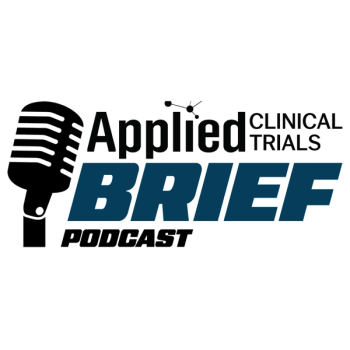Summary
The Phase III VAYHIT2 trial evaluated ianalumab plus eltrombopag versus placebo plus eltrombopag in adults with primary ITP previously treated with corticosteroids. The combination significantly prolonged time to treatment failure and achieved higher rates of sustained platelet count improvement at six months. The study enrolled patients with platelet counts below 30 G/L, randomizing them to four once-monthly intravenous doses of ianalumab or placebo alongside eltrombopag. Safety was consistent with prior findings and no new signals emerged.
Novartis has shared positive, topline results the Phase III VAYHIT2 clinical trial (NCT05653219) of ianalumab plus eltrombopag in patients with primary immune thrombocytopenia (ITP) previously treated with corticosteroids. Compared to placebo plus eltrombopag, the ianalumab-eltrombopag combination therapy achieved its primary endpoint measure of prolonging time to treatment failure (TTF).1
Safety profile consistent with prior data
Further findings from this readout of VAYHIT2 show:
- Patients receiving ianalumab in combination with eltrombopag achieved a significantly higher rate of sustained platelet count improvement at six months, meeting the key secondary endpoint.
- The safety profile of ianalumab was consistent with prior clinical findings.
- No new safety signals were observed.
In a press release, Adam Cuker, MD, professor of medicine and chief, Section of Hematology, University of Pennsylvania, said: “While current treatments for ITP are generally effective in raising platelet counts, many patients require life-long treatment to maintain safe levels, which can create a lasting treatment burden. The results from VAYHIT2 are encouraging, as they suggest that ianalumab may support longer periods of disease control and reduce the need for continuous treatment.”
Study design and endpoints
The VAYHIT2 study is a Phase III, multicenter, randomized, double-blind trial evaluating two doses of ianalumab versus placebo in combination with eltrombopag in adults with primary ITP.2
- Eligible patients had platelet counts below 30 G/L and had not responded to prior first-line corticosteroid treatment.
- Participants were randomized 1:1:1 to receive four once-monthly intravenous infusions of ianalumab 3 mg/kg, ianalumab 9 mg/kg, or placebo, alongside eltrombopag.
- The primary endpoint was TTF, defined as platelet count below 30 G/L beyond eight weeks after randomization, need for rescue therapy after eight weeks, initiation of new ITP therapy at any time, inability to taper or discontinue eltrombopag, or death.
- The key secondary endpoint was the percentage of patients with stable platelet count response at month six.
- Additional secondary endpoints included depth and duration of platelet response, as well as patient-reported outcomes on quality of life and fatigue.
Potential to reduce treatment burden
In the press release, Shreeram Aradhye, MD, president, development and chief medical officer, Novartis, added: “For many people living with ITP, chronic treatment can disrupt their daily life due to the burden of regular dosing, dose adjustments and side effects. These positive top-line results from the Phase III study highlight the potential of ianalumab, if approved, to deliver long-term disease control with four once-monthly doses and enable extended time off treatment.”
Novartis plans to present this data at an upcoming medical conference and incorporate it into future regulatory submissions in 2027 alongside results from the ongoing first-line ITP trial, VAYHIT1 (NCT05653349). The FDA and EMA have already granted ianalumab Orphan Drug Designation.
Additional findings in Sjögren’s disease
Just a day prior to this announcement, Novartis shared positive data of ianalumab in Sjögren’s disease from the Phase III NEPTUNUS-1 (NCT05350072) and NEPTUNUS-2 (NCT05349214) trials. Results showed that ianalumab significantly reduced disease activity along with demonstrating a favorable safety profile.
- NEPTUNUS-1 was a randomized, double-blind, two-arm, multicenter Phase III trial assessing ianalumab 300 mg subcutaneously once monthly versus placebo in 276 patients over 52 weeks.
- The primary endpoint was the change from baseline in EULAR Sjögren Syndrome Disease Activity Index (ESSDAI) score at week 48 compared to placebo.
- Key secondary endpoints included ESSDAI response at weeks 24 and 48, change from baseline in stimulated whole salivary flow rate at week 48, change from baseline in Physician’s Global Assessment at week 48, and change from baseline in Patient’s Global Assessment at week 48.
- NEPTUNUS-2 was a randomized, double-blind, three-arm, multicenter trial evaluating ianalumab 300 mg monthly, ianalumab every three months, or placebo in 506 patients for up to 52 weeks.
- The primary and secondary endpoints were identical to those in NEPTUNUS-1.
References
1. Novartis ianalumab Phase III trial meets primary endpoint in ITP, demonstrating statistically significant improvement in time to treatment failure. News release. Novartis. August 12, 2025. Accessed August 12, 2025. https://www.novartis.com/news/media-releases/novartis-ianalumab-phase-iii-trial-meets-primary-endpoint-itp-demonstrating-statistically-significant-improvement-time-treatment-failure
2. A Study of Efficacy and Safety of Ianalumab Versus Placebo in Addition to Eltrombopag in Primary Immune Thrombocytopenia Patients Who Failed Steroids (VAYHIT2). ClinicalTrials.gov. Updated July 22, 2025. Accessed August 12, 2025. https://clinicaltrials.gov/study/NCT05653219





